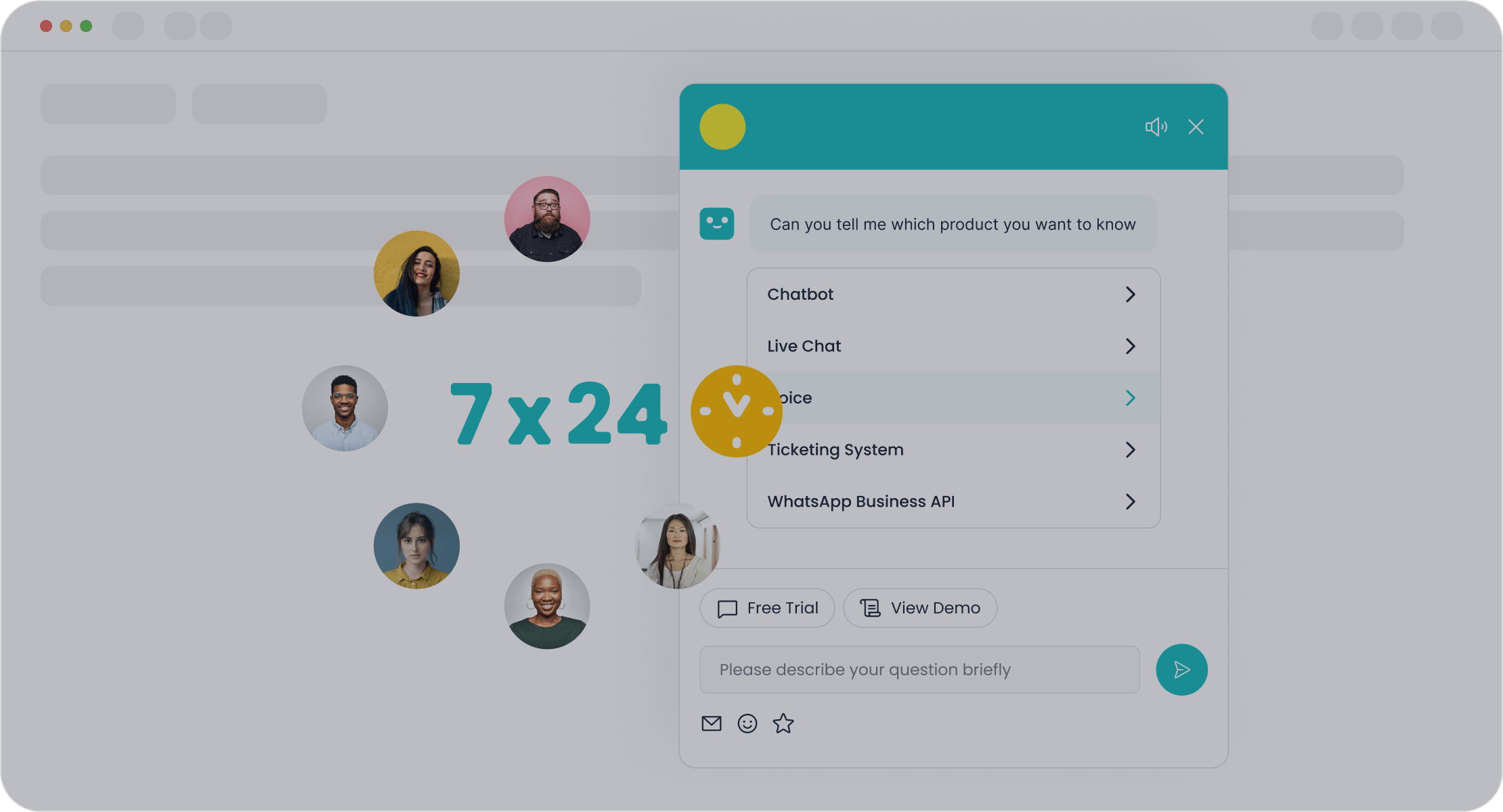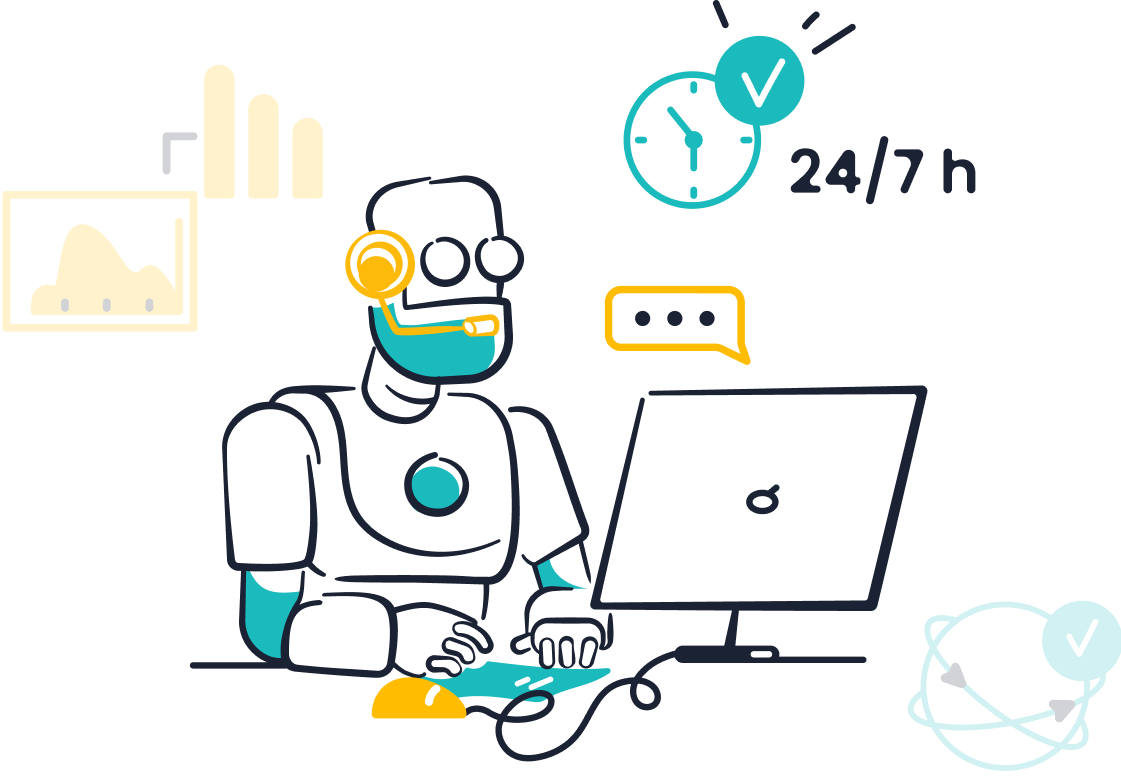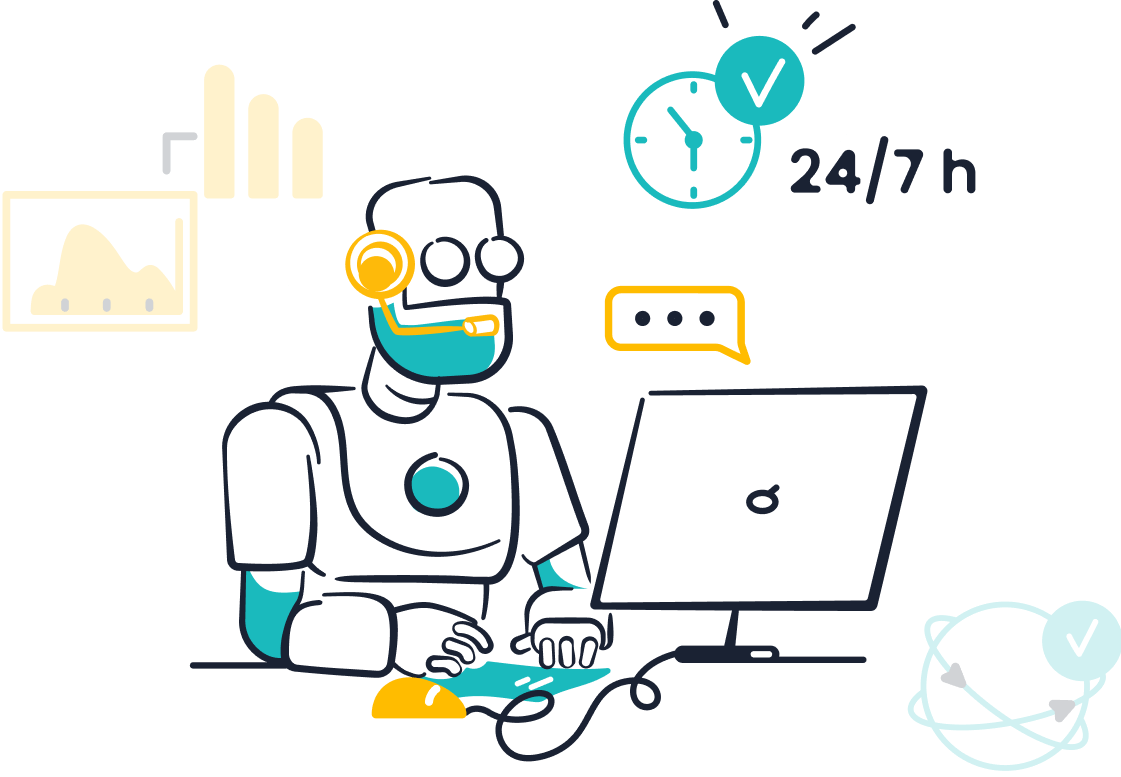Effective Self-Service Strategies for Customer Satisfaction

In today’s fast-paced world, self-service has become a game-changer for businesses. Did you know that 81% of customers try to solve issues on their own before reaching out for help? Tools like chatbots and knowledge bases empower you to find answers quickly, without waiting for a representative. Businesses adopting self-service strategies see a 45% boost in customer satisfaction and save up to 30% on service costs. Companies like Sobot offer advanced customer self service software, helping you resolve issues efficiently while improving your experience. It’s a win-win for both you and the business!
Understanding Self-Service Strategies
What Are Self-Service Strategies?
Definition and purpose of self-service strategies.
A self-service strategy is all about empowering customers to find answers and solve problems on their own. It’s like giving them the tools to help themselves without needing to wait for a support agent. These strategies often include resources like FAQs, knowledge bases, and AI-powered chatbots. The goal? To make your customer experience smoother, faster, and more convenient.
By implementing a self-service strategy, businesses aim to reduce response times and improve customer satisfaction. It’s not just about saving time—it’s about creating a seamless experience that makes customers feel valued and in control.
The role of self-service in improving customer experience.
Self-service plays a huge role in shaping how customers perceive your brand. Imagine being able to resolve an issue in minutes instead of hours. That’s the power of self-service! It eliminates frustration and builds trust. In fact, 67% of customer churn happens because issues aren’t resolved on the first try. A well-designed self-service strategy ensures that customers get the help they need quickly, boosting satisfaction and loyalty.
Benefits of Self-Service for Businesses and Customers
Enhanced efficiency and reduced response times.
Self-service solutions like chatbots work 24/7, handling repetitive queries so your team can focus on complex issues. This means faster resolutions for customers and less strain on your support staff. For example, IBM’s self-service AI platform reduced call center traffic by 40%, proving how efficient these tools can be.
Increased customer satisfaction and loyalty.
When customers can solve problems easily, they’re happier. And happy customers stick around. Studies show that 89% of consumers are more likely to repurchase after a positive experience. Self-service doesn’t just improve satisfaction—it builds long-term loyalty.
Cost savings and scalability for businesses.
Self-service isn’t just great for customers; it’s a smart move for your business too. Chatbots alone can cut service costs by 30%. Plus, these solutions scale effortlessly, handling thousands of queries without adding extra staff. It’s a win-win for everyone involved.
Identifying Customer Needs for Tailored Self-Service
Why Understanding Customer Needs Is Crucial
The impact of tailored self-service solutions on customer satisfaction.
When you design self-service solutions that align with what customers actually need, you create a smoother, more satisfying experience. Imagine visiting a website where you can instantly find answers to your questions without digging through irrelevant information. That’s the magic of tailoring self-service to customer needs. Research shows that 91% of customers would use a knowledge base if it met their expectations. This proves that understanding what your customers want isn’t just helpful—it’s essential for building trust and loyalty.
Challenges of neglecting customer needs in self-service design.
Ignoring customer needs can lead to frustration and lost opportunities. For instance, 38% of Gen Z and Millennial customers abandon unresolved issues, which means they might never return. If your self-service platform doesn’t address their concerns effectively, you risk losing not just one sale but potentially a lifetime of business. A poorly designed system can also damage your brand’s reputation, making it harder to win back trust.
Methods to Identify Customer Needs
Conducting surveys and gathering feedback.
Surveys are a simple yet powerful way to understand what your customers want. By asking direct questions, you can gather valuable insights into their preferences. For example, Sobot’s clients often use customer feedback to refine their chatbot workflows, ensuring the platform addresses common queries effectively. This approach not only improves the self-service experience but also boosts customer satisfaction.
Analyzing customer behavior and support data.
Your customers’ actions can tell you a lot about their needs. By analyzing support tickets, chat logs, and website interactions, you can identify patterns and common pain points. Did you know that 95% of businesses report an increase in self-service requests? This trend highlights the importance of using data to optimize your self-service channels. Tools like Sobot’s AI-powered chatbot can help you track and respond to these trends in real time.
Using customer personas to guide self-service strategies.
Customer personas are fictional profiles that represent your typical users. They help you predict what your customers might need and how they prefer to interact with your brand. For instance, if your persona is a tech-savvy Millennial, you might prioritize mobile-friendly self-service options. By tailoring your strategy to these personas, you can create a more personalized and effective experience.

Selecting the Right Customer Self-Service Software

Key Features of Effective Self-Service Tools
User-friendly interfaces and intuitive navigation.
When choosing customer self service software, you want tools that are easy to use. A user-friendly interface ensures customers can navigate the self-service portal without frustration. Imagine a clean layout where answers are just a click away. This simplicity improves the user experience and keeps customers coming back. According to expert reviews, tools with advanced content management and intuitive designs make it easier for users to find what they need quickly.
Integration with existing customer service systems.
Your self-service portal should work seamlessly with your current systems. Integration ensures that all customer interactions—whether through chatbots, live agents, or email—are unified. This consistency creates a smoother experience for both you and your customers. For example, Sobot’s chatbot integrates effortlessly with various platforms, ensuring a cohesive customer journey.
Scalability and customization options.
As your business grows, your self-service solutions should grow with you. Scalable self-service solutions allow you to handle increasing customer demands without breaking a sweat. Customization is equally important. It lets you tailor the portal to match your brand and meet specific customer needs. Sobot’s chatbot, for instance, offers customizable workflows that adapt to your unique requirements.

Sobot Chatbot: A Smart Self-Service Solution
How Sobot Chatbot enhances customer experience.
Sobot’s AI-powered chatbot takes customer self service software to the next level. It operates 24/7, providing instant answers and reducing wait times. This not only improves customer satisfaction but also boosts loyalty. Users love how the chatbot personalizes interactions, making every experience feel tailored to their needs.
Key features of the Sobot Chatbot, including AI and multilingual support.
The Sobot Chatbot stands out with its advanced features. It supports multiple languages, ensuring customers can interact in their preferred language. Its AI capabilities allow it to learn from interactions, improving accuracy over time. Plus, it’s easy to set up—no coding required! Here’s a quick look at its impact:
| Metric | Value |
|---|---|
| Positive feedback rate | 96%+ |
| Customer satisfaction (CSAT) | 97% |
| Problem resolution rate | 85% |
| Customer happiness rate | 99% |

Best Practices for Tool Integration
Ensuring seamless integration with the customer journey.
A smooth integration process is key to a successful self-service portal. Start by understanding your customers’ needs. Analyze common issues and feedback to design a system that fits seamlessly into their journey. Sobot’s chatbot, for example, integrates with platforms like WhatsApp and SMS, ensuring customers can access help wherever they are.
Testing and refining tools before deployment.
Before launching your self-service solutions, test them thoroughly. Identify any glitches or areas for improvement. Regular updates and refinements keep your portal running smoothly. This proactive approach ensures your customers always have a reliable and satisfying experience.
Optimizing Self-Service Channels for Accessibility and Performance

Enhancing Accessibility
Designing for mobile and multi-device compatibility.
Your customers expect self-service tools to work seamlessly across all devices. Whether they’re using a smartphone, tablet, or desktop, the experience should remain consistent. Mobile compatibility is especially critical, as 73% of customers prefer resolving issues through self-service portals on websites accessible from multiple devices (Dimension Data). For example, iQor’s IVR system allows customers to check order statuses without waiting for an agent, improving satisfaction across devices (iQor Case Study). By designing self-service channels with responsive layouts and intuitive navigation, you can enhance user experience and engagement.
Ensuring compliance with accessibility standards.
Accessibility isn’t just a nice-to-have—it’s essential. Your self-service tools should cater to all users, including those with disabilities. Compliance with standards like WCAG ensures your platform is inclusive. For instance, the Ministry of Health KPK implemented an electronic queue management solution that improved patient waiting times and satisfaction (Wavetec Case Study). By prioritizing accessibility, you create a customer journey that’s welcoming to everyone.
Personalizing the Self-Service Experience
Using AI for tailored recommendations and proactive support.
AI transforms self-service into a personalized support powerhouse. It learns from customer interactions to offer tailored recommendations and proactive solutions. This approach reduces calls, chats, and email inquiries by 70%, while boosting satisfaction by 20%. Plus, 73% of shoppers believe AI improves customer engagement through personalized service. Imagine a chatbot that anticipates your needs before you even ask—that’s the magic of AI-driven self-service.
Allowing customers to customize their self-service preferences.
Letting customers personalize their self-service journey makes them feel in control. For example, Sobot’s chatbot allows users to customize workflows, ensuring the platform aligns with their unique needs. This flexibility fosters customer engagement and enhances user experience. Studies show that 52% of customers expect offers tailored to them, and 77% are willing to pay more for personalized experiences. By empowering customers to shape their journey, you build trust and loyalty.
Measuring and Improving Performance
Tracking KPIs like resolution rates and customer satisfaction scores.
To ensure your self-service channels succeed, track key performance indicators (KPIs). Metrics like resolution rates, customer satisfaction scores, and engagement levels reveal how well your tools are performing. For instance, 91% of customers say they’d use a knowledge base if it met their needs, and businesses adopting self-service see a 45% increase in satisfaction. Regularly monitoring these KPIs helps you identify areas for improvement.
Regularly updating and auditing knowledge bases.
A well-maintained knowledge base is the backbone of effective self-service. Regular updates ensure customers always find accurate and relevant information. Businesses that audit their knowledge bases frequently report higher resolution rates and better customer engagement. Sobot’s AI-powered chatbot, for example, uses automated workflows to keep knowledge bases fresh and reliable. This proactive approach ensures your self-service tools remain effective and user-friendly.

Empowering Service Teams to Support Self-Service
Training Teams on Self-Service Tools
Educating teams on guiding customers to self-service options.
Your service team plays a vital role in helping customers embrace self-service. By educating them on how to guide users to these tools, you empower both your team and your customers. For instance, when agents explain how to use a chatbot or navigate a knowledge base, they promote customer independence. This not only reduces repetitive inquiries but also enhances the overall customer support experience. High adoption of customer communities, where users share advice, further supports this approach. With 67% of customers preferring self-service forums, your team’s guidance can make a significant difference.
Providing ongoing training on new tools and updates.
Technology evolves quickly, and so should your team’s skills. A robust customer education program ensures your staff stays updated on the latest self-service tools. Regular training sessions help them understand new features and how to use them effectively. This boosts customer satisfaction and operational efficiency. For example, clients report a 45% increase in CSAT after implementing self-service options. Metrics like feature adoption rate and operational efficiency highlight the importance of continuous learning.
Streamlining Processes for Collaboration
Aligning self-service with live support for seamless escalation.
Self-service works best when it’s part of a larger, customer-friendly service model. Aligning self-service solutions with live support ensures customers can escalate issues smoothly when needed. For example, integrating chatbots with live chat allows agents to step in when a query becomes too complex. This reduces frustration and improves the customer experience. Companies implementing self-service often see a 45% drop in phone inquiries and a 39% reduction in email traffic, proving the value of seamless collaboration.
Encouraging cross-department collaboration to improve self-service.
Your self-service strategy thrives when teams work together. Collaboration between departments like IT, marketing, and customer service ensures your tools meet customer needs. For example, unifying client support processes helps agents focus on complex issues while self-service handles routine queries. This approach not only trims operational costs but also enhances customer independence. Encouraging teamwork fosters innovation and ensures your self-service channels remain effective.
Fostering a Customer-Centric Mindset
Recognizing team contributions to self-service success.
Acknowledging your team’s efforts boosts morale and encourages them to prioritize customer needs. When employees see how their work impacts customer satisfaction, they feel more engaged. This engagement translates into better service and higher revenue growth. For example, a customer-centric culture often leads to repeat purchases and positive referrals. Recognizing contributions also reinforces the importance of continuous improvement.
Promoting a culture of continuous improvement.
A customer-centric mindset drives innovation. By regularly evaluating feedback and updating your self-service tools, you ensure they stay relevant. For instance, understanding customer needs and maintaining open communication builds trust. Organizations that prioritize feedback often see better business outcomes. Embedding continuous improvement into your culture helps you stay ahead in a competitive market while fostering customer independence.
Self-service strategies are transforming how businesses enhance customer satisfaction. By empowering customers to resolve issues independently, you can create faster, more seamless experiences. The key steps include understanding customer needs, selecting the right tools, optimizing channels for accessibility, and empowering your teams to support these solutions effectively.
For example, businesses adopting self-service platforms report a 45% boost in customer satisfaction and save up to 30% on service costs. Tools like Sobot’s AI-powered chatbot not only streamline operations but also improve customer retention by resolving issues on the first try. With benefits like these, it’s time to take action. Start implementing effective self-service solutions today and watch your business thrive.
FAQ
What is self-service, and why is it important?
Self-service lets customers solve problems on their own using tools like chatbots, FAQs, or knowledge bases. It’s important because 81% of customers prefer finding answers themselves. This approach saves time, reduces frustration, and boosts satisfaction. Tools like Sobot’s AI-powered chatbot make self-service even more effective by offering 24/7 support.
How can self-service improve customer satisfaction?
Self-service improves satisfaction by providing quick and easy solutions. For example, Sobot’s chatbot resolves 83% of queries instantly, reducing wait times. Customers love the convenience of finding answers without contacting support. Studies show that 89% of people are more likely to return after a positive self-service experience.
Tip: Keep your self-service tools updated to ensure customers always find accurate information.
What features should I look for in self-service software?
Look for these features:
- User-friendly design: Easy navigation is key.
- AI capabilities: Tools like Sobot’s chatbot learn and improve over time.
- Multilingual support: Serve a global audience.
- Integration: Ensure it works with your existing systems.
These features make self-service seamless and scalable.
Can self-service reduce business costs?
Absolutely! Self-service tools like chatbots can cut service costs by up to 30%. Sobot’s chatbot, for instance, operates 24/7, handling repetitive queries without needing extra agents. This reduces staffing costs while improving efficiency. Plus, it scales effortlessly as your business grows.
How do I measure the success of my self-service strategy?
Track these key metrics:
- Resolution rate: How many issues get solved?
- Customer satisfaction (CSAT): Are users happy?
- Engagement: Are customers using the tools?
Sobot’s chatbot, for example, boasts a 94% positive feedback rate, showing how effective self-service can be.
Note: Regularly update your knowledge base and tools to maintain high performance.
See Also
Enhance Customer Satisfaction with These 10 Live Chat Tips
Increasing Efficiency Through AI-Driven Customer Service Solutions
Improve SaaS Support Using Effective Live Chat Techniques
Transforming Customer Support with AI Service Agents
Selecting the Right Social Media Customer Service Tools: 10 Tips